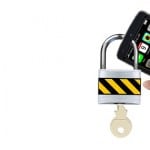By Daniella Crankshaw, Marketing Communications Manager
I recall watching the news about three weeks ago when the news story about yet another US school shooting was aired. This time it was in the Sparks Middle School in Nevada. My heart ached with worry and concern. As a parent, I think that this is a natural reaction even though I am thousands of miles and oceans away. My condolences go out to the family and friends of the teacher who was the victim of this latest tragedy.
Why am I bringing up this subject? I want to discuss a fleeting comment that I heard on TV. A parent asked why they were not notified in a timely fashion. Being in the messaging business, this comment caught my attention. The unfortunate reality today is that this kind of incident is no longer uncommon. Emergency situations, whether man-made or natural, can happen at any time and when they do occur, communication and response times are vital.
Many schools and campuses have now implemented safety procedures to be followed in the event of an emergency. Some have implemented mass notification systems that deliver pre-recorded or live messages to alert parents, students, faculty members and employees of emergency situations and provide them with relevant instructions.
There are many systems out there and it can be a daunting task to choose which one is best for your specific needs. Each option has its advantages and disadvantages, but I believe that there are four key areas that need to be examined when selecting a system:
- Multi-Channel support: Multiple communication channels should be supported with messages sent as voice messages, text messages (SMS), IP messages, e-mail and fax.
- Flexibility: The system should provide the flexibility to send emergency notifications from any device including mobile phones, tablets, IVR interfaces, PC and password protected web interfaces.
- Time critical features: The system should provide features such as group messaging, message delivery and tracking, pop ups, reminders and message escalation across devices.
- Vendor Reliability: There are four questions that you should ask your vendor in order to ascertain their reliability:
- Do they have a track record of at least 99.95% uptime?
- Do they have a Disaster Recovery (DR) platform in a separate location?
- Do they use several ISP vendors and Telephony vendors?
- Do they connect directly to multiple mobile carriers to ensure reliable SMS delivery?
The answers to all these questions should be a resounding “yes”:
No parent ever wants to hear that their child has been affected by a disaster, but at least with an effective multi-channel messaging system, schools can reassure parents that if necessary, emergency notifications and alerts to both emergency services and parents will be sent out in the quickest and most effective way.



